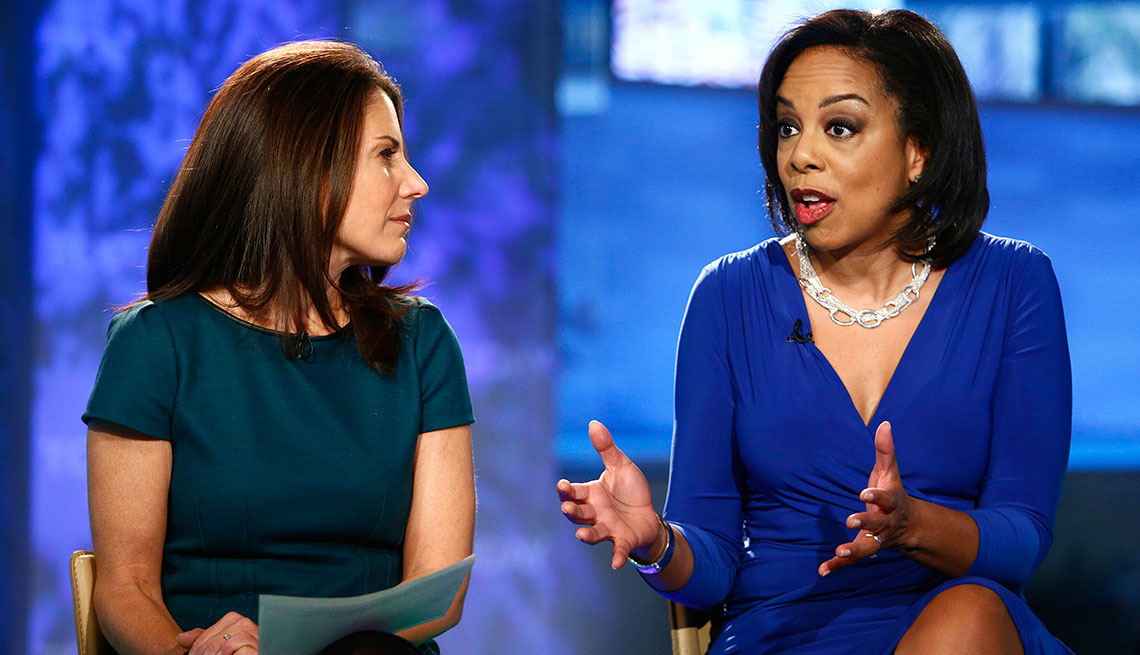Staying Fit
It happened at the gym. About 18 months ago, Sharon Epperson, CNBC’s senior personal finance correspondent and a good friend of mine, was mid-yoga when she developed what she describes as “the worst headache of my life.” The diagnosis: A blood vessel in her brain had ruptured; she’d had an aneurysm. For the soon-to-be-50 mother of two, nothing has been the same since.
Epperson woke a day after surgery with two clips in her brain to stop the bleeding and repair the damage. She was hospitalized for a month, followed by a long stint of rehabilitation—speech therapy, physical therapy, cognitive therapy and a lot of time working to simply regain strength. Initially, going back to work wasn’t even a consideration. “Multitasking is your worst enemy,” one therapist told her. “You have to focus on one thing at a time and try to do it well.” Epperson was floored. “With the career and the household and the two kids, I didn’t even know what that meant.” She expected to be out of work for six months; she didn’t return for over a year.


AARP Membership— $12 for your first year when you sign up for Automatic Renewal
Get instant access to members-only products and hundreds of discounts, a free second membership, and a subscription to AARP the Magazine.
And yet this story has a happy ending. Epperson has spent more than two decades telling stories about the things people should do with their money if they want to protect themselves in case of emergency (some 3 million individuals suffer a workplace injury or illness each year—and that’s just at the workplace). She was prepared. “I’m so happy that I listened to the experts we talk to all the time and the financial advisers who say do this, consider that,” she points out. And still, she emerged with lessons to impart—and things she might have done differently if she had to set herself up for a yearlong disability all over again. Here they are.
If your employer offers long-term disability insurance, take it
About 40 million workers in the private sector have long-term coverage through their employer, says disability insurance expert Winthrop Cashdollar, of America’s Health Insurance Plans; the number who need coverage is far greater. Those who work for a living, rely on their paycheck to live, and couldn’t cover a six- to 12-month gap in salary with savings should have disability insurance.
While many employers pay for these policies, Cashdollar says more and more are asking employees to contribute something. That’s what happened at CNBC, Epperson recalls. “I asked my financial adviser, who told me, ‘Get as much as you can.’ ” But many people don’t, Cashdollar says. When employees are asked to pay all or part of the premium, less than half pony up. That’s a mistake. Not only do the chances of a disability increase with age, the most common ones aren’t what you think. They’re due more to illnesses than injuries. For instance, 29 percent come from musculoskeletal issues (think back pain and arthritis); 15 percent, from cancers; and 9 percent, from high blood pressure and heart disease. Considering that the average cost of a group policy is less than $40 a month, not signing up is not the right answer.
Supplement with private insurance
Even if you have a policy through your employer, there are two good reasons to buy a little more on the private market. First, group policies typically replace up to 60 percent of your pre-disability gross income, not including bonuses, for instance. That may not be enough to live on. By adding a supplemental individual policy, you can bring your coverage up to 80 percent. Why not more? “That creates an incentive to avoid returning to work,” says Jennifer Fitzgerald, CEO of Policygenius, an online insurance marketplace. The second reason is that as you age, you’re likely to have more health issues, not fewer. And if you lose or leave your job, your employer policy may or may not be portable. Plus, some private policies let you increase your coverage amount without your having to go through another physical.
If your employer doesn’t offer disability insurance, buy it yourself
There’s no getting around it. Private disability insurance isn’t cheap. A 50-year-old white-collar male living in New York state and earning $100,000 a year could pay $2,244 to $3,036 a year for a policy that would pay $5,000 a month, according to Policygenius. A similar 50-year-old female: $2,916 to $3,960. (Women are more likely to be disabled and therefore cost more to insure.) But don’t let the price stop you, as there are a few ways to lower it, Fitzgerald explains.
































































